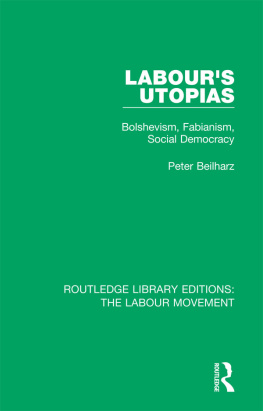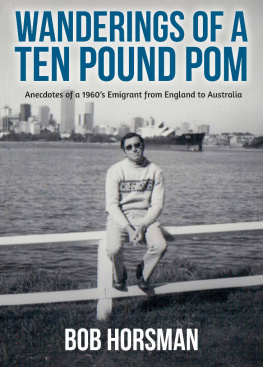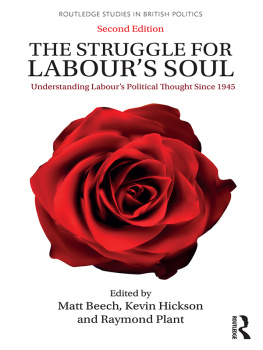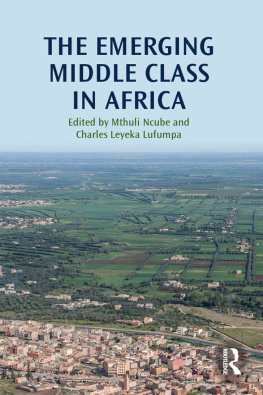CASS LIBRARY OF AFRICAN STUDIES
MISSIONAEY RESEARCHES AND TRAVELS
No. 16
General Editor: ROBERT I. ROTBERG
Associate Professor, Department of Political Science,
Massachusetts Institute of Technology
LIFE, WANDERINGS, AND LABOURS
IN
EASTERN AFRICA
MISSIONARY RESEARCHES AND TRAVELS
No. 10. Frederick Stanley Arnot
Garenganze; Or, Seven Years Pioneer Mission Work in Central Africa (1889)
With a new introduction by Professor Robert I. Rotberg.
New Edition.
No. 11. Hope Masterton Waddell
Twenty-Nine Years in the West Indies and Central Africa. A Review of Missionary Work and Adventure 1829-1858 (1863)
With a new introduction by G. I. Jones.
Second Edition.
No. 12. W. A. Elmslie
Among the Wild Ngoni (1899; 1901)
With a new introductory note by Ian Nance.
Third Edition.
No. 13. Robert Pickering Ashe
Two Kings of Uganda. Or, Life by the Shores of Victoria Nyanza.
Being an Account of a Residence of Six Years in Eastern Equatorial
Africa (1889)
With a new introduction by Prof essor John Rowe.
Second Edition.
No. 14. A. M. Mackay
A. M. Mackay, Pioneer Missionary of the Church Missionary Society to Uganda (1890). By his sister (J. W. H.).
With a new introductory note by Professor D. A. Low.
New Edition.
No. 15. Samuel Crowther
Journal of an Expedition up the Niger and Tshadda Rivers undertaken by Macgregor Laird, Esq., in connection with the British Government
in 1854 (1855)
With a new introduction by Professor J. F. A. Ajayi.
Second Edition.
No. 16. Charles New
Life, Wanderings, and Labours in Eastern Africa. With an Account of the First Successful Ascent of the Equatorial Snow Mountain, Kilima Njaro. And Remarks upon East African Slavery (1873; 1874) With a new introduction by Alison Smith.
Third Edition.
No. 17. Ruth Fisher
Twilight Tales of the Black Baganda. The Traditional History of Bunyoro-Kitara, a Former Uganda Kingdom (1911)
With a new introduction by Professor Merrick Posnansky.
Second Edition.
No. 18. James Frederick Schon and Samuel Crowther
Journals of the Rev. James Frederick Schon and Mr. Samuel Crowther, who, with her Majestys Government, accompanied the Expedition of the Niger in 1841, on behalf of the Church Missionary Society (1842) With a new introduction by Professor J. F. A. Ajayi.
Second Edition.
LIFE, WANDERINGS, AND LABOURS
IN
EASTERN AFRICA
With an Account of
The First Successful Ascent of the Equatorial
Snow Mountain, Kilima Njaro
and Remarks upon
EAST AFRICAN SLAVERY
BY
CHARLES NEW
THIRD EDITION
WITH A NEW INTRODUCTION BY
ALISON SMITH
Institute of Commonwealth Studies, Oxford
Published by
FRANK CASS AND COMPANY LIMITED
2 Park Square, Milton Park, Abingdon, Oxon, 0X14 4RN
New introduction Copyright 1970 Alison Smith
| First edition | 1873 |
| Second edition | 1874 |
| Third edition | 1971 |
Transferred to Digital Printing 2006
ISBN 0 7146 1876 4
ISBN: 978-1-136-98429-7 (ePub)
Printed and bound by Antony Rowe Ltd, Eastbourne
GENERAL EDITORS PREFACE
Charles New is remembered too often solely because he ascended Kilimanjaro. In 1871 he was the first white man to reach its snowline and thereby to verify the famous sighting by J. L. Rebmann in 1848 (Baron Carl Claus von der Decken, Otto Kersten, and Richard Thornton had climbed the mountain in 1861 and 1862 without attaining the glaciated region), a magnificent achievement for the time and the man. But he was more than a surprisingly intrepid scaler of heights. In company with Thomas Wakefield, a fellow Methodist, he evangelized among the Nyika and Galla peoples of what is now Kenya, made several exploratory journeys northeastwards from Ribe near the Indian Ocean littoral, contributed to the confirmation of geographical assertions put forward by Johann Ludwig Krapf (and identified Mount Kenya as the source of the Tana River), collated important information about the caravan trade of the interior, and stimulated a new scientific interest in eastern equatorial Africa (which was followed up by the journeys of Joseph Thomson and Harry Johnston) by gathering and pre- serving a collection of Alpine flora from Kilimanjaro. In the field of ethnology, he made some study of the Nyika and Galla, and reported on the Sania and Boni. Life, Wanderings and Labours, now reprinted for the first time, is, in addition, valuable for its glimpses of the Chagga chiefs Mangi Rindi, and Moshi, for News comments on Chagga life, and for his descriptions of an encounter with the Masai or Kwavi (Illoikop).
In her introduction to the present edition Miss Alison Smith, of the Institute of Commonwealth Studies, University of Oxford, and the editor of African Affairs and joint editor of volume III of the Oxford History of East Africa, also examines News attitudes towards Islam and slavery and the slave trade. She assesses his contribution to the opening-up of eastern Africa to the West, and discusses News career in East Africa subsequent to the publication of the present book. She provides a well-rounded, convincing picture of the man and his works.
Cambridge, Massachusetts
INTRODUCTION
TO
THE THIRD EDITION
As an African explorer, at least, the short career of Charles New in Africa was one of promise rather than of achievement. Apart from two brief descriptive accounts printed by the Royal Geographical Society, Life, Wanderings and Labours (London, 1873) was his only publication, while his journeyings were limited to a short venture up the Tana River, a four week reconnaissance of the Usambara district, and two visits to Kilimanjaro. Thus his modest writings were easily over- shadowed by, among his contemporaries, the writings of Richard Burton, John Hanning Speke, Otto Kersten, and Samuel Baker, and those of the missionaries David Livingstone and Johann Ludwig Krapf. Nevertheless, this book adds its own pages to the annals of discovery; it gives valuable glimpses of the peoples and history of East Africa twenty years before the main period of European penetration; above all, it reveals some- thing of a singularly attractive character, whose proven abilities and resolution might have taken him much further, both in missionary work and in exploration.
New was one of the toughest and most energetic of the young missionaries who pitted their lives against the climate of coastal East Africa, and in many cases lost them. He had a sense of humour and a rare warmth of affection. He could convey vividly his own keen perceptions of people and land- scape; and he had immense courage. He says Httle, not only of the natural hazards of his travels, but of the constant bouts of fever and dysentery (probably aggravated by stone) which steadily weakened him. Even an hour or two before his death from dysentery and exhaustion, he managed to write coherent and exact directions for his rescue.











